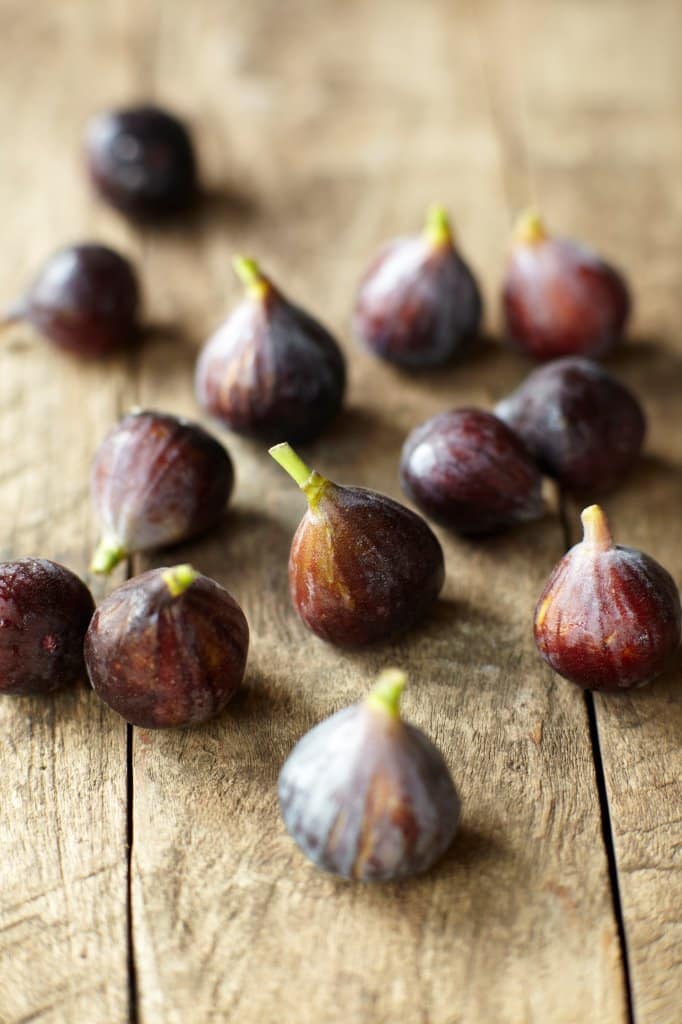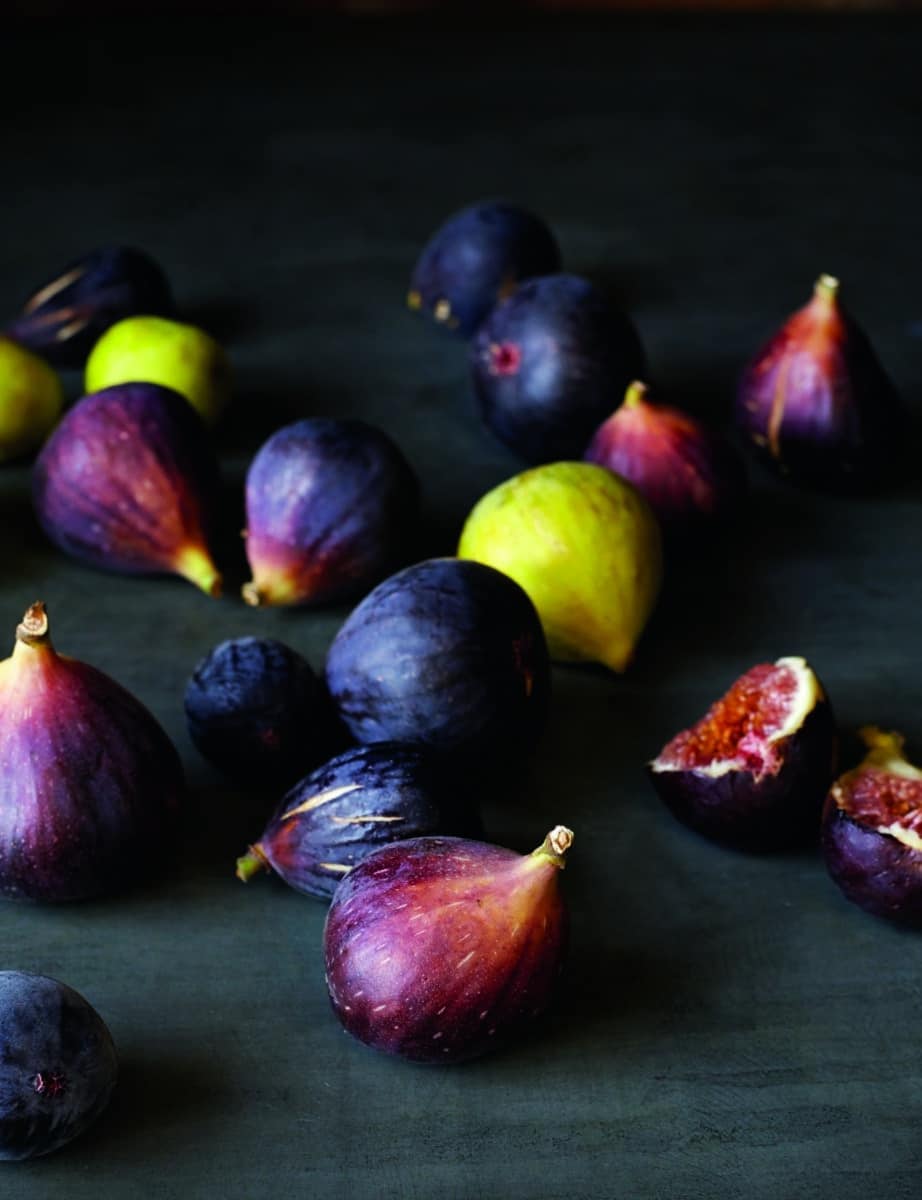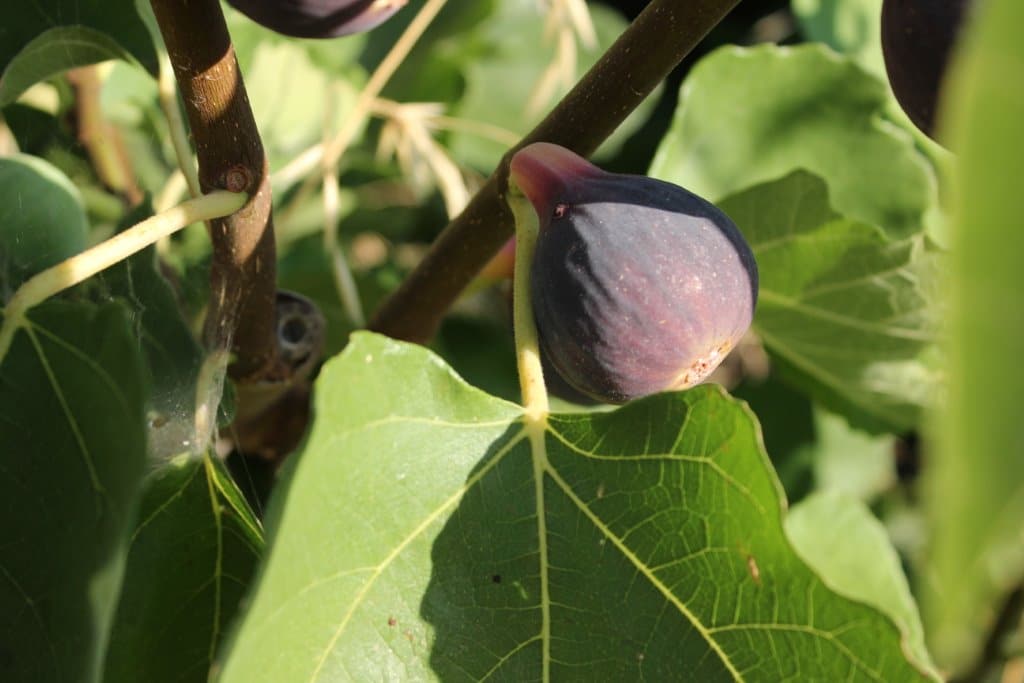The Mystery of the Fig of Commerce: How a California Pioneer Nurseryman Found the Secret
California produces 98% of all the figs grown in the United States - but it was a long process to get there.
Prior to 1850, the only fig grown in California was the variety which had been brought by the Spanish Missionaries in the 1700s, which became known as the Mission fig. From the mid 1850s through the 1890s, nurserymen and orchardists were seeking new fig varieties to introduce into the state, especially the Smyrna type. This was the succulent sweetmeat of the Middle East that dominated the world trade in dried figs and was known as ‘the fig of commerce.’ The early California nurserymen, orchardists, plant hunters, and promoters were sure that California, with its superb soil and climate, could take over the dried fig market if they could find the right variety and cultivate it.
The early part of the fig’s history after the Gold Rush in 1848 was dominated by the search for and importation of new varieties of all kinds, but the latter part was focused specifically on the Smyrna fig. The story unfolds like a tale from Arabian nights, with trips to exotic places, acquisitions through foreign intermediaries, visits to the Maghreb, accusations of Syrian and Turkish duplicity and fraud, and veiled and not-so-veiled insults flung among academics as well as in the tabloids of the period.
The Smyrna fig problem was twofold. First, the true variety itself had to be discovered and imported. Second, it had to be grown successfully and produce mature fruit. Locating and securing cuttings involved ordering from and even traveling to the growing regions in the Middle East, primarily the Meander Valley in Turkey. The Americans were somewhat apprehensive about this because they feared that the Turkish traders and agents, knowing that California wanted to get into the dried fig trade, would trick them, and give them cuttings of other figs, not the Smyrna. Actually growing the Smyrna fig, once cuttings were obtained, was complicated by the lack of accepted and agreed upon scientific knowledge about pollination or caprification of figs. The international scientific community of the time was divided on the issues, and, once trees were established, the Americans had to discover by experimentation, trial, and error about the caprification of the Smyrna fig in its new California environment.
The first verifiable cuttings of Smyrna figs were imported into California in 1880 by G.P. Rixford, who was then the business manager of the Evening Bulletin newspaper in San Francisco. When the cuttings arrived at the port of San Francisco, only 200 had survived. The original shipment had been 448 cuttings ordered by Rixford through the American consul in Smyrna. The surviving cuttings were shared among the investors, including the prominent nurseryman William West, who took one-fourth of the shipment to his Stockton nursery. Leland Stanford, the governor of California at that time, was involved in the venture and planted his portion of the new imports on his ranch in the Sacramento Valley.
In 1882, another shipment of Smyrna figs was ordered from Turkish agents, this time of 14,000 cuttings. West and Stanford were again among the investors, as was the Bulletin Company itself. A number of the cuttings were distributed to Bulletin subscribers. Eventually reports came in from all over California of lush, thriving trees, all of which dropped their young, immature fruit. The Smyrna fig was failing in its new home. The newspaper was accused of having brought in wild figs instead of Smyrna figs and of having been duped by the Turks, who, according to West and fellow nurseryman George Roeding, were afraid the Californians would take over their profitable trade in dried figs if they could grow the Smyrna fig.
What had gone wrong? Did they have the wrong fig after all? Were their cultural practices incorrect? In 1886 Fancher Nursery in Fresno, under the leadership of George Roeding and his retired father Frederick, sent their new foreman, William West, the experienced horticulturalist and nurseryman from Stockton, on a mission to Smyrna. Not only was he to bring back cuttings of true Smyrna figs and also caprifigs, but he was to investigate exactly how the Turks were growing the figs and bring back that knowledge as well.
West was no stranger to traveling in foreign countries in search of figs, but, upon arriving in Smyrna, he found that he was not able to secure the cuttings directly, and ran into considerable troubles even at the outset of his mission. The American consul told him that he would have to go through a foreign resident. Disguising himself as a hunter, he and a Mr. Hall, an English resident, set out on an expedition to the backcountry. Mr. West reports in a letter to his employer “…and [I] was successful in getting cuttings from Erbold (this is the valley where the finest figs are grown). I did not appear in the transacting at all, but was shooting in the orchard where the cuttings were being gathered.”

Mr. West then shipped his fig cuttings to Smyrna, declaring them to be licorice root. Presumably the Turks were not worried about the Americans taking over the licorice market. West gathered nearly 10 tons of plant material, not all of it fig. In the end he shipped only about half of it back to the United States because of the expense.
The cuttings of the collected Smyrna figs – which Roeding and others were determined could be successfully grown in California to produce mature fruit which could then be dried – were planted at Fancher Creek Nursery, along with the cuttings of caprifigs which West also brought back.
There is no question that the prevailing thought of the time was that California could produce a dried fig of superior quality that could not only compete vigorously in the world market, but also take over the domestic market which in 1890 amounted to over 9 million tons of dried figs.

The trees planted at Fancher Creek were indeed the true Smyrna figs, as were the four-year old rooted trees imported in 1890 by the State Board of Horticulture, and those trees grown from Smyrna fig seeds by a Mr. Maslin, and also the 10,000 cuttings acquired from the United States Department of Agriculture in 1890. But they did not set and produce mature fruit. By 1890, it was evident that the first problem had been solved: the true Smyrna fig, the fig of commerce had been identified and was growing in California. The second problem remained: how to produce the mature fruit? Although there were suspicions that the Smyrna fig might be a female type that needed pollination, academic argument at the time was rife over the subject both in Europe and the United States.
In the late 1800s and early 1900s, scientists were still working on classifying the different types of cultivated figs. Today we know that cultivated figs are clearly botanically classified into 4 different groups according to their pollination and fruit setting characteristics: the Common fig, the San Pedro or intermediate fig, the Smyrna fig, and the Capri fig. Common figs are self-pollinating, and the San Pedro or intermediate type needs pollination for its second crop, called the mammoni, but not for its first crop, the profichi or breba crop.
Smyrna fig types are female and require pollination by the male or Capri fig. This pollination is accomplished in nature by the Blastophaga wasps, which live in the Capri figs and emerge just at the moment that the Smyrna fig types need pollinating. The wasp enters the young fig at the ostiole, or eye, searching for a place to lay its eggs, accidentally bringing the necessary pollen for fertilization with it.
By the late 19th century many different varieties of figs had been introduced to California some from East Coast nurseries, others from Europe, including the Mission fig, but virtually all of them were common figs that did not need pollination. The Capri or wild fig, which bears inedible fruit, had also been imported into the state as early as 1865, perhaps by accident.
These common figs were all readily grown by the California fig growers. However, none of the growers were at this time of Syrian or Turkish descent with firsthand knowledge of cultivation practices for the Smyrna fig. The cultivation methods used by the California growers were only those relevant to the common, not the Smyrna fig. Even when the Smyrna fig cuttings had been successfully imported to California, planted, taken root, and fruited, there was no firsthand knowledge available of the fertilization practice required for the fruit to mature.

In terms of scientific information regarding pollination of figs, there was considerable conflict in international horticultural circles over whether or not figs needed pollination. B.M. Lelong who was Secretary of the California State Board of Agriculure in 1891, reports that “In Asiatic countries it has been the custom from time immemorial to hang fruits of the wild or caprifig on the limbs and boughs of the domestic fig tree, under the impression that the pollen of the male fig was conveyed to the female by means of a small fly known as the Blastophaga. While this practice is considered an absolute necessity by the Asiatic growers, who inherited the tradition from their ancestors for [from] a remote period, those who have given it a thorough scientific investigation declare it not alone useless, but detrimental.” That same year George Roeding had successfully produced fully mature Smyrna figs by inserting the pollen of Capri figs into the eyes of the young Smyrna figs using a tooth-pick. Later Roeding repeated the feat, this time blowing the Capri fig pollen into the eye of the Smyrna through a glass tube.
George Roeding, James Shinn, a prominent fig grower, Gustav Eisen, scientist and horticulturalist at California Academy of the Sciences, and Walter T. Swingle, horticulturist and plant explorer, among others, were now convinced of several things. The Smyrna fig could be grown successfully in California, it needed to be pollinated, and to accomplish it on a commercially viable scale, the fig wasp needed to be introduced into this country.
Now begins the second phase of the Smyrna fig mystery: getting the living insect introduced into a California fig orchard at the moment pollination is needed. During a visit by some missionaries at his house, John Shinn complained about his non-bearing fig trees. By chance, one of the visitors volunteered to get some cuttings for him from a friend of hers who was then in Smyrna. Shinn accepted the offer, and a large box of cuttings arrived in 1890 from Smyrna. Shortly thereafter a small box arrived with a letter: “The figs must be caprified; if not you will get no figs. I will send you a little box of figs that are full of the Blastophaga, and hope you can do well with them.” Shinn’s son took the box of figs out to the Capri fig tree, and opened it. Most of the insects were dead, but not all of them. However, that season, the only figs to come to maturity on Shinn’s Smyrna fig trees were those that he had artificially fertilized by hand with Capri pollen, and these developed into large, lush, Smyrna figs. All the others fell to the ground while still small and green.
Gustav Eisen dates this event as the spring of 1891, and goes on to state that the insects “were seen to hatch and fly about.” However, the wasps failed to install themselves in Shinn’s orchard because there was only one Capri fig tree, and it bore fruit only once a year. Consequently there were no figs for the wasps to lay eggs in.
Now the nurserymen and horticulturists turned their efforts to importing the live wasps. The turning point in the introduction of the fig wasp into California came in 1898 with the appointment of Walter Swingle as an agricultural explorer for the United States Department of Agriculture under the auspices of its new Plant Introduction Service. Swingle had been in Italy in 1896 and, in spite of some of the prevailing thoughts to the contrary, had become convinced of the need to introduce the Blastophaga into the Smyrna fig orchards in the United States in order for the figs to be pollinated and bear fruit. In 1898, he relates this story: “Traveling there (Marine Biological Institute at Naples, Italy) again at my own expense in March 1898, I was given the courtesy of that great Institution. One day while I was busily wrapping in tinfoil caprifigs containing Blastophaga to send to America, Dr. Paul Mayer brought into my room Count Solms-Laubach, a famous German botanist who had published a bulky treatise on the the fig some 16 years before. He said at once, “Why do you Americans spend good money to come to Europe to study things already decided? Gasparinni showed fifty years ago that figs do not need to be caprified to set fruit and that pollination has no beneficial effect. This is merely peasant superstition. Why did you not study the flora of the Reville Gigedo Islands and so accomplish something useful and interesting?”
Swingle did indeed accomplish something useful and interesting because although his first shipment of Blastophaga arrived too late in California for the wasps to enter the caprifigs, his second shipment in 1899 was a success. These figs, six boxes of them, full of Blastophaga were gathered from the Botanical Gardens in Algiers, where the caprifigs appeared on the trees several weeks earlier than in Naples. The shipment went first to Dr. L.O. Howard at the US Department of Agriculture who then shipped them to George C. Roeding in Fresno.
The foil-wrapped figs arrived safely in the hands of George Roeding in time for the living wasps to enter caprifigs fruiting in his orchards. They pollinated Roeding’s Smyrna figs, proving that the ‘fig of commerce’ could now be grown successfully on a commercial scale in California.
George Roeding was so excited about having finally solved the mystery of the Smyrna fig, that he proposed a contest to give the fig a new name for it in its new home, with the winner to receive a $25.00 prize. The name Calimyrna was chosen, and that is the name that the Sarilop or Lop Injir, the most important variety of the Smyrna, is known as in the United States.
The mystery of successfully growing ‘the fig of commerce’ had been solved, thanks to the intrepid work of nurseryman George Roeding and his cohorts, Shinn, West, and Swingle. Today, California produces 98% of all the figs grown in the United States and is 6th in world production. ![]()

